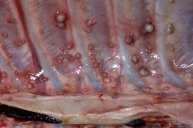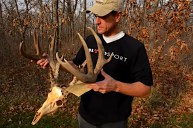Officials are giving a stark warning to hunters as deer populations experience the second-biggest outbreak of Epizootic Hemorrhagic Disease. Also called E-H-D, the disease is a quick killer of deer.
The disease appears to be hitting deer in Iowa especially hard. Local Steven Patzner recounts how the disease has devastated the population on his land. "As the winter went on last year, I've seen more and more of them all the time. At one time, I was up to 14 in this field one evening," he said.
2023 ended up being the second-worst outbreak of the disease since 2012 in Iowa. So far, it seems like 2024 may actually beat it.
"Unfortunately, 2024 actually beat the number of reports that we got last year, making this the new second most severe outbreak," said Jace Elliot, the Iowa DNR's State Deer Biologist. 94 of the 99 counties in the state have reported having the disease.
"To date, there's been about 2,500 EHD reports across the state. And anybody listening should understand that that's likely a drop in the bucket." said Elliott.
Deer Disease
From a sickness standpoint, hunters and humans have nothing to worry about. You can't catch E-H-D from any sick deer or eating venison. However, Elliot is still asking hunters to report any sightings of sick deer. They may be lethargic or have a blue tongue. It's possible that they may already be dead, typically near a water source.
But from a hunting perspective, the disease could pose a big problem for hunters. Pete Hildreth, the conservation and recreation division administrator for DNR, says there may be less opportunities for hunters.
"It's (possible) this year's deer harvest data will reflect a general loss of opportunity for hunters throughout many parts of the state," Hildreth said.
To help the DNR, you can report populations in hunting spots and also any infected deer. Monitoring the disease will be crucial for future hunting experiences.
"It is crucial for hunters to understand that their input is highly valued in our deer management system," Hildreth said "Keep in mind that these county summaries are a vast underrepresentation of the potential realized mortality."




